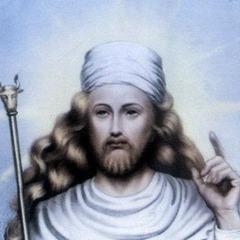The Gathas, the early psalms, a significant number of which may have been composed by Zoroaster, are pervaded by eschatological reasoning. Pretty much every entry contains some reference to the destiny anticipating men in existence in the wake of death. Each demonstration, discourse, and thought is seen as being identified with a presence in the afterlife. The natural state is associated with a state past, in which the Wise Lord will compensate the great demonstration, discourse, and thought and rebuff the terrible. This thought process in doing great is by all accounts the most grounded accessible to Zoroaster in his message.

After death, the spirit of man must ignore the Bridge of the Requiter (Cinvat), which everybody views with dread and nervousness. After judgment is passed by Ahura Mazda, the great enter the realm of everlasting bliss and light, and the terrible are committed to the locales of loathsomeness and obscurity. Zoroaster, be that as it may, goes past this, reporting an end stage for the noticeable world, “the last turn of creation.” In this last stage, Ahriman will be crushed, and the world will be brilliantly reestablished and be possessed by the great, who will live in paradisiacal bliss.
Later types of Zoroastrianism show a restoration of the dead, an educating for which some premise might be found in the Gathas. Through the revival of the dead, the reestablishment of the world gives a keep going satisfaction on the devotees of the Wise Lord.
Cultic changes
Zoroaster restricted all penances out of appreciation for Ahriman or of his disciples, the daevas, who from pre-Zoroastrian occasions had declined into antagonistic gods. In the overall strict convention, Zoroaster most likely found that the act of yielding dairy cattle, joined with the utilization of inebriating drinks (haoma), prompted orgiastic abundance.
In his change, Zoroaster didn’t, as certain researchers would have it, abrogate all creature penance however essentially the orgiastic and inebriating ceremonies that went with it. The haoma penance, as well, was to be thought of as an emblematic contribution; it might have comprised of unfermented beverage or an inebriating drink or plant. Zoroaster held the antiquated religion of fire. This clique and its different ceremonies were later broadened and given a distinct request by the holy class of the Magi. Its inside, the unceasing fire in the Temple of Fire, was continually connected with the clerical help and with the haoma penance.
I love in our eschatology that there is hope for all mankind. Getting people free from falsehood has always been Zoroastrian values. I use the Book of Abramelin as my spellbook.